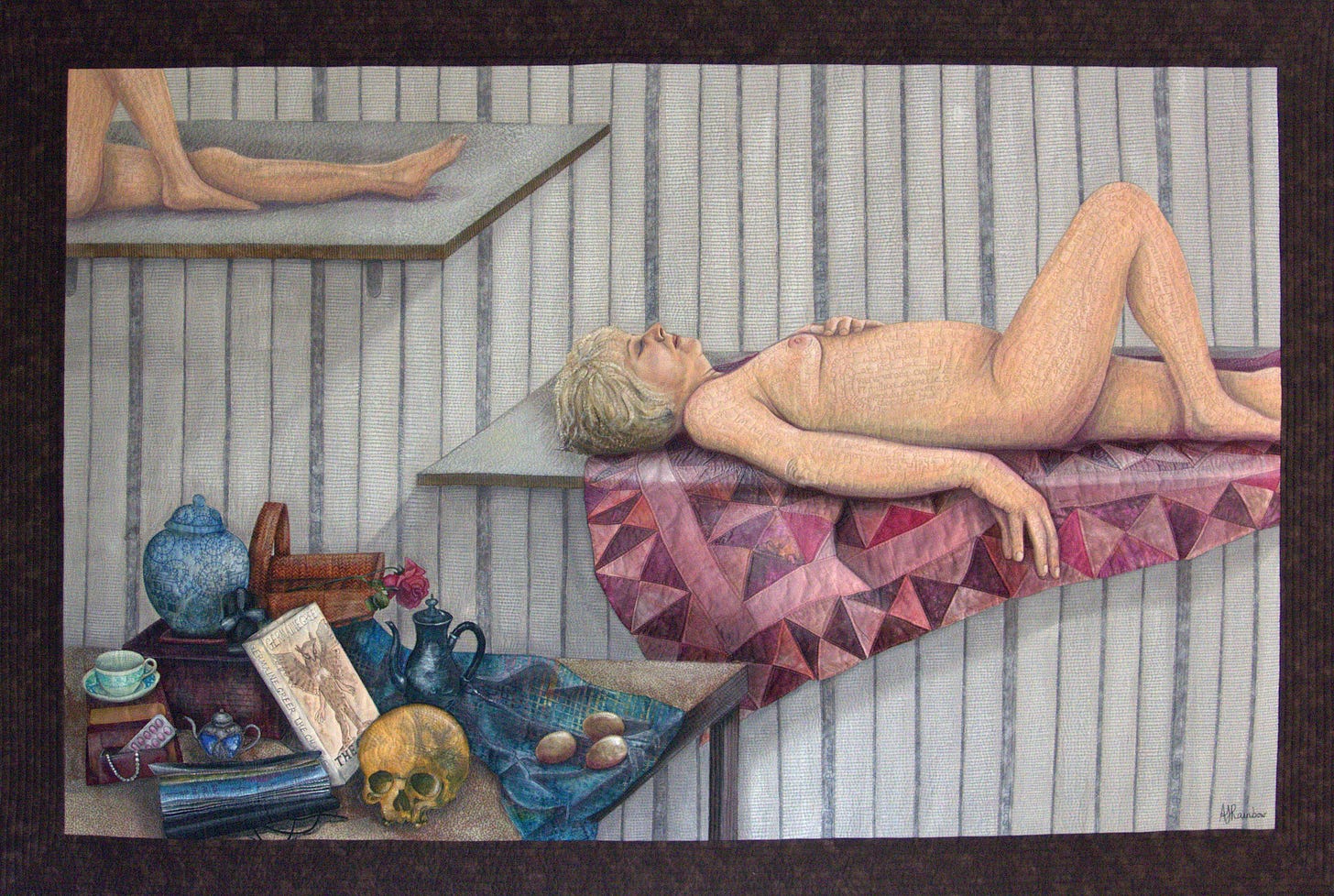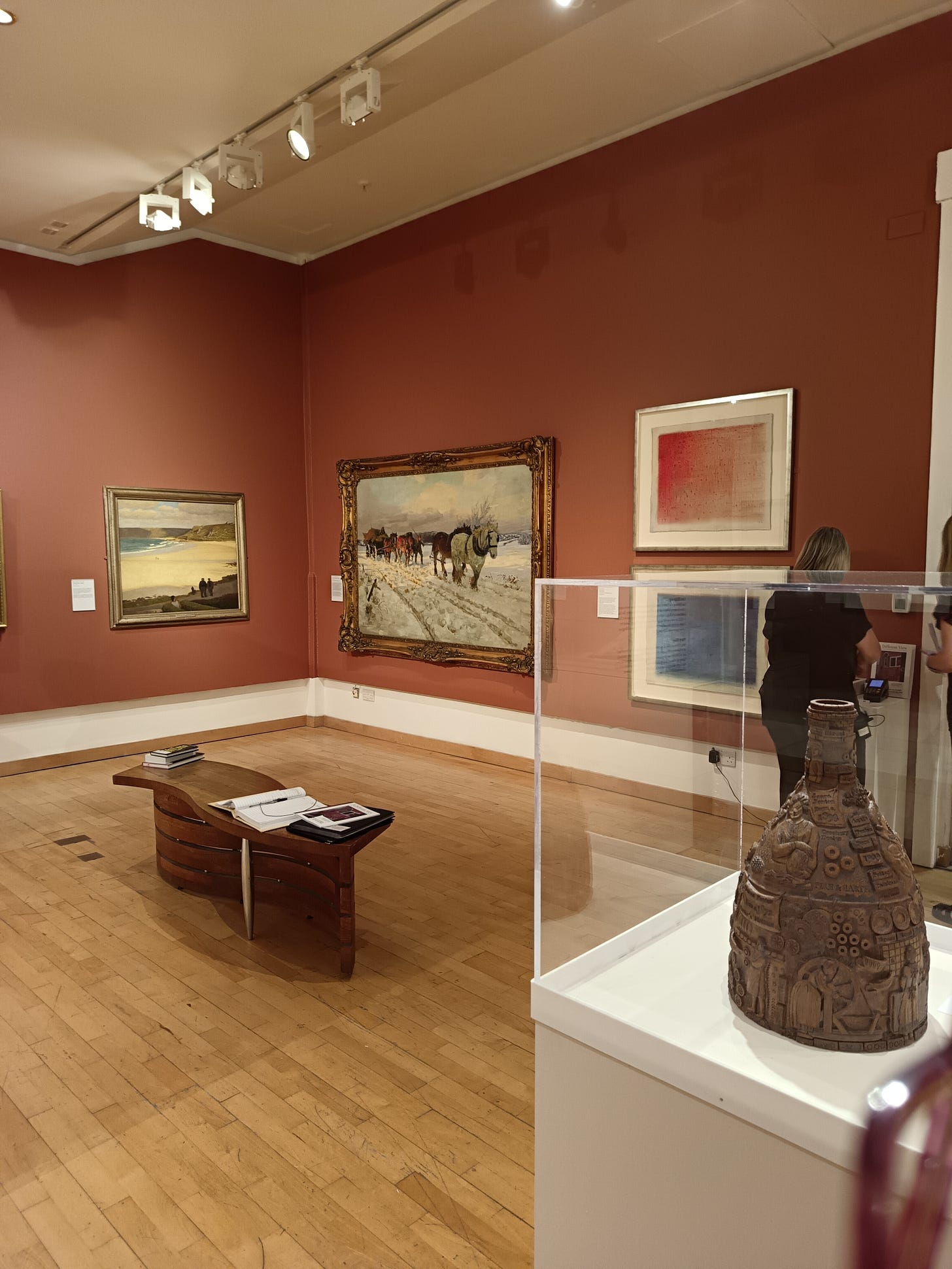Thursday, 20 November 2025
Christmas, Birthday, or any celebration - gift idea!!
Saturday, 25 October 2025
Jacobean Glass - Finding out with the Gallery's Friday Focus
A Friday Focus talk was given by Sonia Morris from the Gallery on the history of European drinking glass design, and focusing on the collection. Their designs were affected by the politican context of the time as well as manufacturing developments.
The Gallery's collection was largely donated by Francis Jahn, who came from a family of ceramic makers in the Potteries.
This posting is just a brief summary of the talk which was extensive - images are included further down the posting.
If you look at a glass, there are 3 parts you can use to describe what you see:
The bowl (bucket, tulip, bell, funnel - is it tall, waisted or lipped)
The stem (Is there a baluster shape, are there twists?)
The foot (plain, domed, folded, solid)
Manufacture
One of he most important advances in glass manufacture was the addition of lead oxide to molten glass, improving it's appearance and easier to make new designs. This was done by George Ravenscroft initially but when his patent ran out in 1696 twenty seven glass houses existed and were widely exporting all over Europe. So of course, the Government decided to tax it.
To compete with each other and continue to make profits, manufacturers reponded by creating highly decorated, small, more delicate forms, often with hollow stems (Excise glasses). The tax was repealed in 1845.
18th century became bolder including curves, natural motifs, single and double twists, sometimes coloured; smaller bowls longer stems, and even enamel canes.
Some of the most collectable glasses are those of the Jacobit Rebellion of 1690 to 1746. Glass cutting became popular, that is carving by hand or machine to make patterns and motifs.
Jacobite History - briefly!
King James ll was Catholic.
After the revolution of 1688 there was a fear that there would be a drive back to Catholisism and William lll of Orange was invited to invade - his wife was Mary, daughter of James ll and protestant. In 1688 James had a son, who if he was bought up to be Catholic and inherited the title, would drive the country away from Protestism. William of Orange invaded, and King James fled.
People who were loyalists to James however, hoped he'd come back and supported him. They were known as Jacobites.
What's that got to do with the glasses of the time?
The government passed a lot of strict treason laws, so to avoid trouble, supporters used to toast the exiled King using secret codes eg when raising a glass to the King (William lll) they took care to do so over the water-filled finger bowls, secretly toasting the King "over the water".
Looking for symbols
If you decide to go rummaging at a car boot, or charity shop, there are lots of things you can look for to identify an incredible and perhaps lucrative find!
- Fiat - translating to "let it be" (referring to a Stuart restoration)
- Amen - incredibly rare - 37 known to exist but there must be more somewhere!
- 6 pointed star - represents royalty.
- Boscobel Oak Leaf - King Charles ll apparently hid in this oak to escape the Roundheads
- Three crowns - England, Scotland and Ireland
- Birds in Flight - Stuart heir either fleeing or returning
- Carnation - A strange way of saying Coronation
- Daffodils - hope and floral symbol of Wales. You might see feathers instead.
- The thistle - embodying resilience, prode and protection through it's thorny-ness.
Symbols in the collection
Bunch of grapes of the vine - hope, rebirth, future abundance and prosperity under the Jacobites.
Sunflowers - symbols of loyalty and steadfast devotion (sunflower heads follow the sun)
Butterfly - moth, gilded dragonfly - representing return of the sould
Bee - fertility and ressurection; a new life out of decay.
4 petalled flower - A variation of the white rose. A cryptic way to identify a supporter of the cause.
A coin in the stem - so when you drained your glass you were confronted with an image of the King so a subtle toast.
At the end of Sonia's talk we were invited to play a game of glass bingo, and tick off the ones we could find! If you wish to do the same you are most welcome to download the image and nip to the gallery for a go!!
Monday, 13 October 2025
Queertopia - Inclusive Impact Award
In 2024 FLAG and Museum Development West Midlands jointly funded a project to enable Leamington Spa AG&M to work with Proud Youth Leamington, a community group established by Warwickshire Pride, to produce a zine.
A display in the hammam area, entitled Queertopia, told the story of the project, showing artwork from the zine alongside museum items and a film created by Willowmann Productions in 2017, which celebrated LGBTQ+ stories from the local community.
This project has now been entered in Museum Development Midlands' the Power of Place: Midlands Museum Award in the category of Inclusive Impact Award. The winner will be announced in a ceremony on 12 November at Thinktank in Birmingham.
Saturday, 11 October 2025
Coming Soon!
Sunday, 28 September 2025
Little update on the Dutch paintings
An update now the details are in.
Thursday, 25 September 2025
Flag funding for the Dutch paintings collection.
Leamington Spa AG&M have an internationally recognised collection of Dutch paintings which, in 2011, were in need of conservation and some reframing. FLAG agreed to take on the funding of this project over several years.
The majority of this work was completed for the Going Dutch exhibition in 2023 while the remaining work will be carried out over the next months. FLAG have been delighted to support this project which will secure this important collection for the future.
Tuesday, 23 September 2025
A Different View - symposium.
By Annabel Rainbow - Membership Secretary, FLAG.
Yesterday I attended a symposium tied to A Different View, the exhibition currently at Leamington Spa Art Gallery & Museum (open until 5 October). The exhibition brings together over fifty women painters, sculptors, and photographers from the gallery’s own collection to explore how women artists have shaped British art through history.
The gallery describes it as:
“The first survey of women artists in the collection, A Different View engages with the historic absence of women in academic narratives and shines a light on those artists who have shaped British art practice and culture.”
The exhibition places historical, modern, and contemporary works side by side, tracing what was possible for women artists from the Victorian period onwards, and how difficult it often was to carve out a career in a male-dominated art world.
Women at the Royal Academy
It wasn’t until 1860 that women could be admitted to the Royal Academy Schools — the first being Laura Herford, who submitted work signed only with her initials. When it was revealed that she was female, the Academy found no rule to exclude her.
Even so, women were still denied access to the life-drawing classes that were considered essential for academic training. Life drawing especially from nude models was thought to be the foundation of an artist’s education: it develops observational skill, a grasp of anatomy and proportion, and the ability to translate three-dimensional form and movement into two dimensions. Working from photographs simply doesn’t give the same experience or vitality.
In my own practice (The Life Series of quilts), I relied exclusively on live models. It was the only way to capture sometimes odd poses with accuracy and energy. All of these works have been exhibited at the gallery in the last few years. You can see the full series on my website.
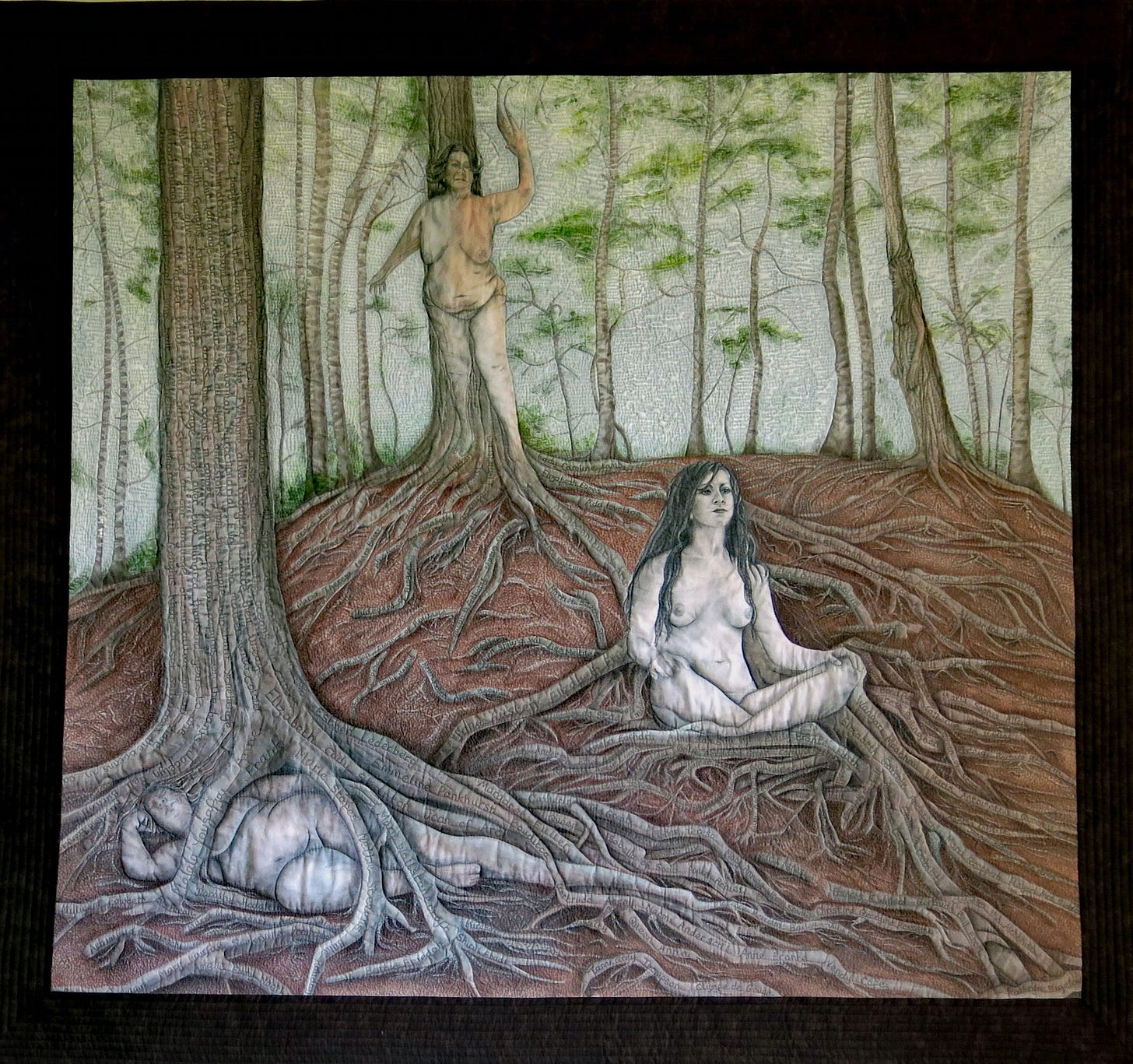
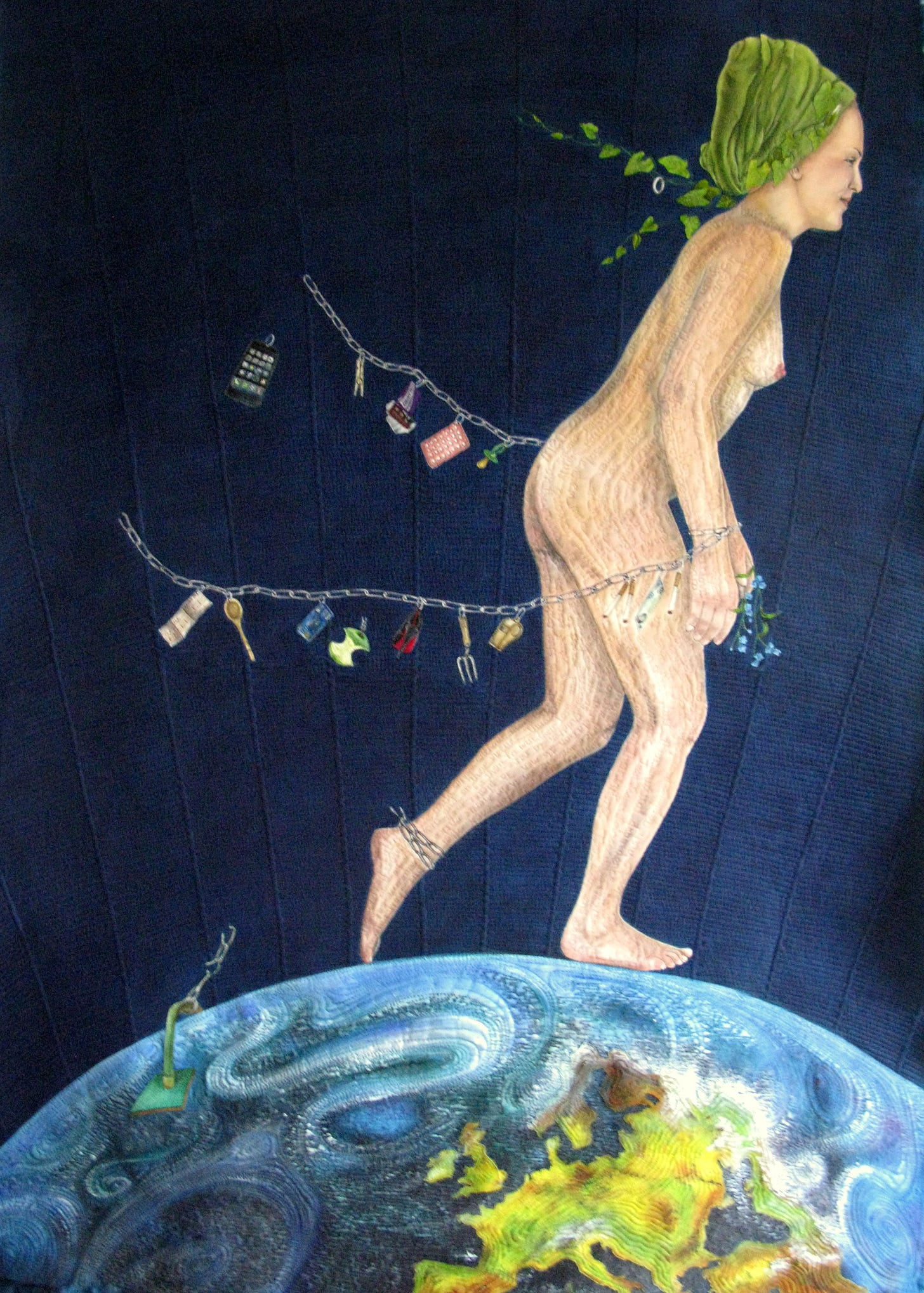
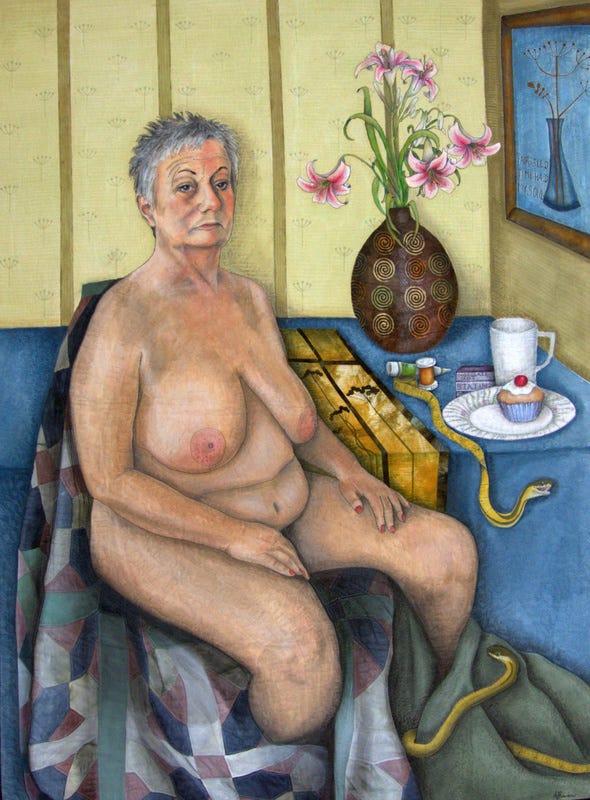
The Symposium
The half-day event brought together artists, researchers, and curators to discuss the representation of women in British art collections. It coincided with the exhibition’s final week and featured contributions from Dr Richenda Roberts (University of Warwick), Dr Sophie Hatchwell and Dr Rebecca Savage (both University of Birmingham), as well as a panel of exhibiting artists Lou Blakeway, Julie de Bastion, and Mary Riley.
Dr Richenda Roberts opened with a historical perspective, focusing on figures such as Evelyn De Morgan. (Yes “wife of” William De Morgan, the potter and novelist, though she was a professional artist in her own right.) Associated with the later phase of the Pre-Raphaelite Movement, she also worked within Aestheticism and Symbolism. Her figural paintings explored spiritual, mythological, and allegorical themes, often using the female body. She was a well-known professional artist in her lifetime and her paintings sold well; we learned that on two occasions she bailed out her husband’s struggling pottery business with her earnings.
Dr Sophie Hatchwell and Dr Rebecca Savage then shared research into women artists represented in the Derbyshire collections, linking them to works in Leamington’s collections. Their work is uncovering overlooked contributions and offering new contexts for how these women fit into British art history, including a lot of discussion about the works for schools in the 50’s onwards.
The day ended with a panel of four artists reflecting on the realities of sustaining a practice while managing family life, caring responsibilities for children and older parents, and the domestic load; from making work at the kitchen table to finding space for creativity both physically and mentally. Much of what they said resonated with me. Despite progress, art remains a heavily male-dominated profession. I’ll leave you with this thought, out of the National Gallery’s collection of over 2,300 paintings, just 21 are by women - that’s around 1%
Thursday, 18 September 2025
A visit to Rugby and Ashby Manor House.
Text and images by Carolyn Gifford
Rugby Art Gallery was hosting two exhibitions focusing on the landscape and natural materials. ‘Woven from the field’ showcased both practical baskets woven from willow by Sue Kirk and more abstract willow forms. Alongside them were textile artist Rosalind Stoddart’s handwoven pieces made with alpaca fleece dyed with natural plant dyes. Not only are the alpacas her own, she also grows a wide range of plants to use as dyes.
‘Found in the fields’ features prints by Carry Akroyd, inspired by the poet John Clare. Across a wide range of printmaking techniques and based on close observation of the landscape, flora and fauna, Carry’s work often quotes words and phrases from Clare, whose poems were reproduced below.
Both exhibitions are on until 15th November, and well worth a visit.
We also visited Ashby Manor House, which dates back to the Norman Conquest. A mellow stone building, it's set alongside the Church of the Blessed Virgin Mary and St Leodegarius (Ledger) and other stone buildings around a wide courtyard. It was the home of Robert Catesby and he and his fellow conspirators may have formed the Gunpowder Plot in an upstairs room of a small half-timbered house close by. The Manor House itself has had various modernisations and extensions but the most significant was by Sir Edwin Lutyens, who spent over thirty years on the house and its gardens.











